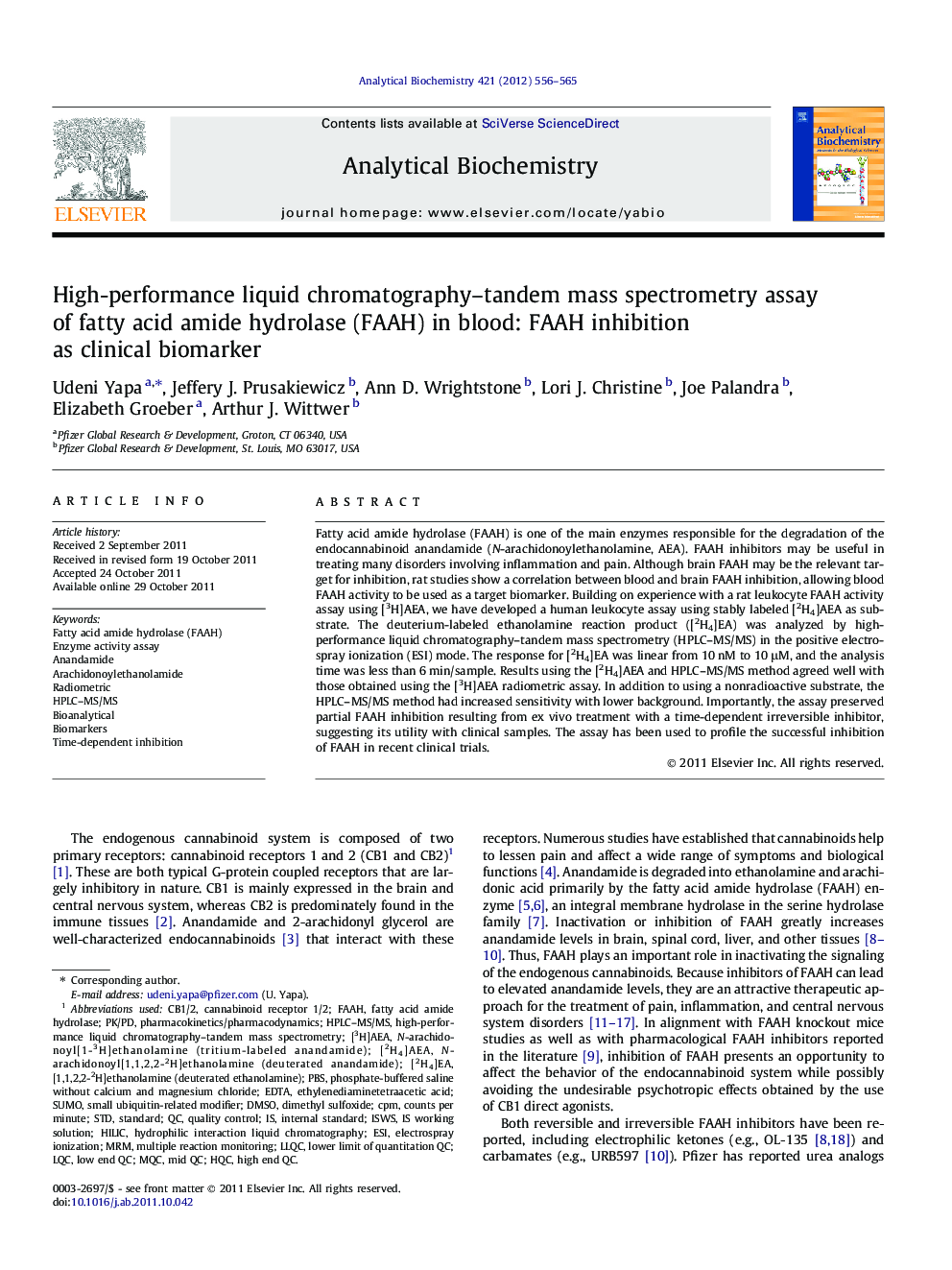| کد مقاله | کد نشریه | سال انتشار | مقاله انگلیسی | نسخه تمام متن |
|---|---|---|---|---|
| 10533712 | 961890 | 2012 | 10 صفحه PDF | دانلود رایگان |
عنوان انگلیسی مقاله ISI
High-performance liquid chromatography-tandem mass spectrometry assay of fatty acid amide hydrolase (FAAH) in blood: FAAH inhibition as clinical biomarker
دانلود مقاله + سفارش ترجمه
دانلود مقاله ISI انگلیسی
رایگان برای ایرانیان
کلمات کلیدی
BioanalyticalArachidonoylethanolamideHPLC–MS/MS - HPLC-MS / MSEnzyme activity assay - آزمایش فعالیت آنزیمیanandamide - آناندامیدfatty acid amide hydrolase (FAAH) - اسید آمید هیدرولاز اسید چرب (FAAH)Radiometric - رادیومتریTime-dependent inhibition - مهار وابسته به زمانBiomarkers - نشانگر زیستی یا بیومارکر
موضوعات مرتبط
مهندسی و علوم پایه
شیمی
شیمی آنالیزی یا شیمی تجزیه
پیش نمایش صفحه اول مقاله

چکیده انگلیسی
Fatty acid amide hydrolase (FAAH) is one of the main enzymes responsible for the degradation of the endocannabinoid anandamide (N-arachidonoylethanolamine, AEA). FAAH inhibitors may be useful in treating many disorders involving inflammation and pain. Although brain FAAH may be the relevant target for inhibition, rat studies show a correlation between blood and brain FAAH inhibition, allowing blood FAAH activity to be used as a target biomarker. Building on experience with a rat leukocyte FAAH activity assay using [3H]AEA, we have developed a human leukocyte assay using stably labeled [2H4]AEA as substrate. The deuterium-labeled ethanolamine reaction product ([2H4]EA) was analyzed by high-performance liquid chromatography-tandem mass spectrometry (HPLC-MS/MS) in the positive electrospray ionization (ESI) mode. The response for [2H4]EA was linear from 10 nM to 10 μM, and the analysis time was less than 6 min/sample. Results using the [2H4]AEA and HPLC-MS/MS method agreed well with those obtained using the [3H]AEA radiometric assay. In addition to using a nonradioactive substrate, the HPLC-MS/MS method had increased sensitivity with lower background. Importantly, the assay preserved partial FAAH inhibition resulting from ex vivo treatment with a time-dependent irreversible inhibitor, suggesting its utility with clinical samples. The assay has been used to profile the successful inhibition of FAAH in recent clinical trials.
ناشر
Database: Elsevier - ScienceDirect (ساینس دایرکت)
Journal: Analytical Biochemistry - Volume 421, Issue 2, 15 February 2012, Pages 556-565
Journal: Analytical Biochemistry - Volume 421, Issue 2, 15 February 2012, Pages 556-565
نویسندگان
Udeni Yapa, Jeffery J. Prusakiewicz, Ann D. Wrightstone, Lori J. Christine, Joe Palandra, Elizabeth Groeber, Arthur J. Wittwer,